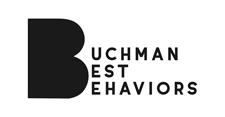Having a dog walk on a leash calmly is one of the top issues that clients come to me with. In the following video, you will see me walking with a long-time client, Jane.
One unrealistic expectation that many people have is that a dog must always walk by your side. This behavior is known as a "heel" behavior and is useful but should not be used constantly. Walks are good physically for the dog but they also serve the purpose of mental enrichment. To have a dog in constant heel denies them the opportunity to use their nose and fire up millions of cells in their brain. One way to think about it is that they are wired for their nose as much as we are wired for our eyes. Allow them to explore their environment on the walk. Use "heel" behaviors to bring them in for control in temporary situations where it is better for everyone's safety.
To begin a walking behavior I first need to talk about tugging on the leash. When any animal is pushed or pulled the reaction they have is to resist that push or pull. This is true for us and our dogs. When we get pulled by a dog we yank back on the leash and this, in turn, causes the dog to pull even harder. This reaction has led to myths such as "harnesses cause dogs to pull". What happens is dogs react and when they react enough times it becomes habitual behavior. Instead what we do is if the dog pulls we stop and avoid yanking the leash. This gives the dog full control on the tension they feel. I want the dog to have this control of tension because eventually, I want the tension to become a cue for a check-in behavior.
A check-in behavior is a just that, a check-in. We train the dog to look back at the owner to see what is going on. We develop this by marking/clicking and rewarding when the dog looks back. Start moving and as soon as the dog is pulling you more than you want you stop moving without yanking the leash. If the dog looks back, mark and reward. Do not toss the treat to the dog but hand it to them. This causes the dog to fully come back to you so that you can start the walk again. Before we start walking behaviors we generally work on other fundamentals such as "target" behaviors. This gives us tools to draw the animal's attention toward the handler when the distractions become too large. In addition to this stop and check-in behavior, the handlers should also be marking and rewarding whenever the dog looks at the owner when they aren't asked for it. The more rewarding it is to pay attention to the handler the more the dog will do it.
When the dog is at a sniff but it is time to move on I utilize a "3, 2, 1, Let's Go" cue. The countdown lets the dog know how much time they have left to smell the smell. Once they leave the smell or whatever it is that is causing them to lag behind, mark and reward. If the pup does not leave the stimulus to continue the walk. Slowly start walking in the direction you wish to go. Once again we want to avoid yanking on the leash and just add a slow steady pressure from our walking, no arm movement should be involved. Even though the dog did not leave the stimulus immediately they still must be marked and rewarded the instant they do start going in the direction of the handler. Denying the reward at this point would only leave the reinforcement with the distraction and not with the handler.
The last and probably most forgotten and most important. Bring better treats! Compared to training in the home or the backyard, the walk is surrounded by high-value reinforcers that are out of the control of the handler. To compete with these reinforcers we need to up the value of what we have to offer. The better and more consistent the reward the less the animal needs to focus on other things in their environment to be reinforced.
Using this basic methodology we can get the animal to walk on a leash or harness with equal ease. There is no need to involve choke chains, tightening harnesses (which I like to call rib crushers), or no pull muzzle collars. From my experience, the punishment tools have a problem of working initially but then no longer working as the dog becomes desensitized to the discomfort that the tool creates.
